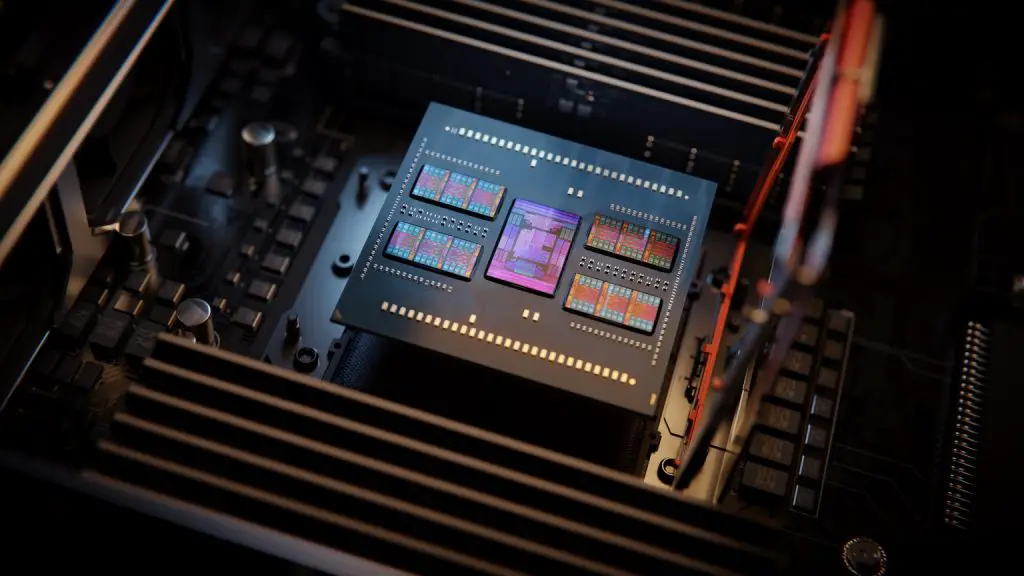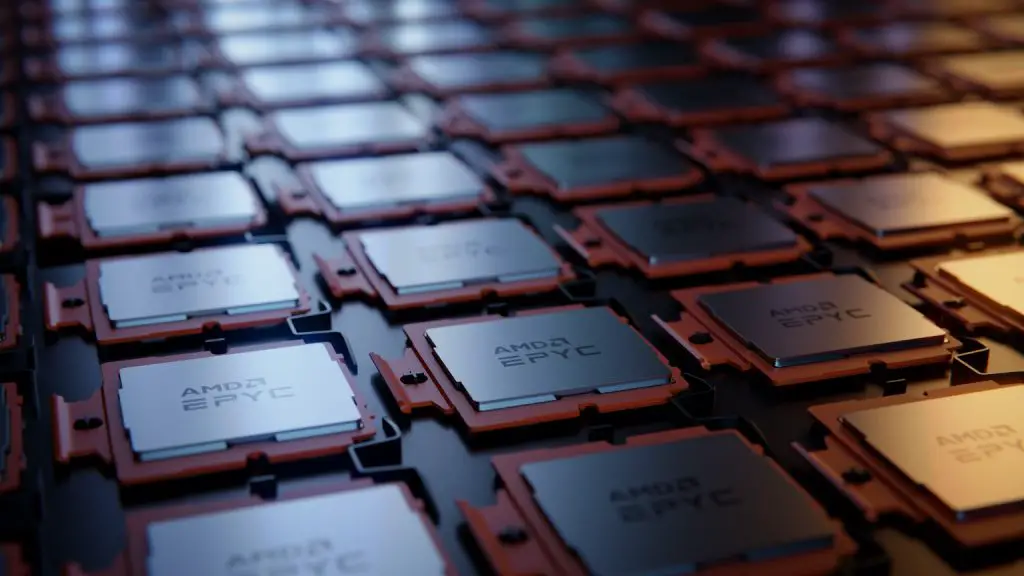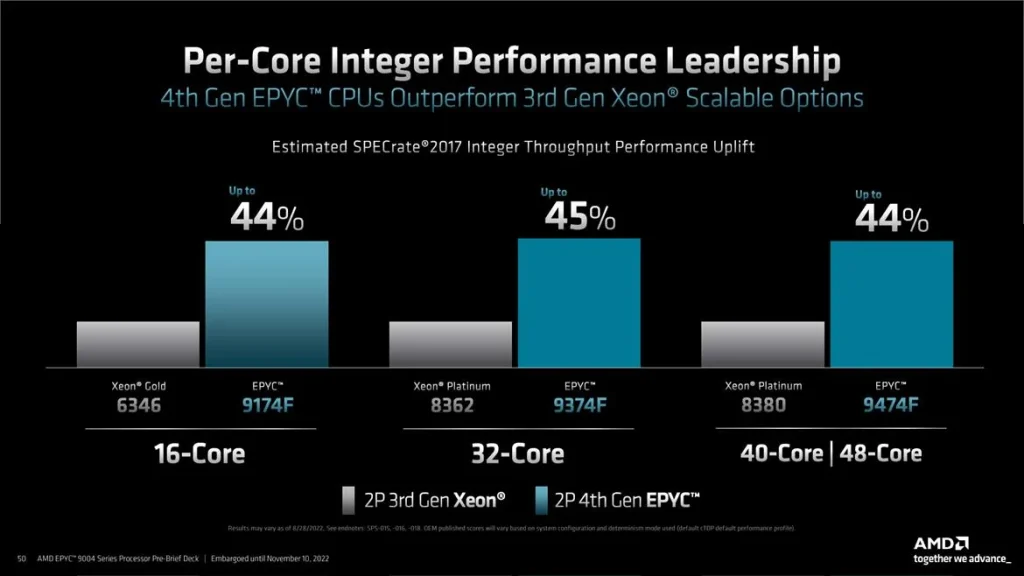AMD has finally revealed the next powerhouse CPU for data centers, the 4th generation EPYC 9000 series processors.

Codenamed Genoa, the underlying architecture of these EPYC chips is the same as the consumer-class Ryzen 7000 series which is Zen 4 but as usual, the main story of EPYC is pretty much the same – more core count across the board resulting in higher IPC and faster frequencies. But Team Red has some other special sauces that debuted with Genoa too.
For one, the Branch Target Buffer (BTB) at the front end has been improved to 2x 6.5k to 2x 7k L2 while the L2 cache has been doubled in general (From 3th-gen’s 512KB to 1MB). As a whole, the IPC improvement is about 13% according to Team Red, largely contributed by the aforementioned BTB expansion together with better branch predictions and read/write optimizations.
Debuting in 2022 also means that it fully supports DDR5 memory and PCIe 5.0 transfer protocols for the fastest data transmission possible in addition to CXL 1.1+ memory expansion that offers even more options when it comes to in-memory workloads that demand a high volume of DRAM.

In terms of feature set, the AMD Infinity Guard has been expanded and improved with 2 times the number of encryption keys now available compared to last-gen, more data can be secured at once no matter locally, virtually, or in the cloud. Hardware support for AVX-512 including VNNI dedicated for neural network workloads also within Zen 4 has an advantage that prevents reduced clock speeds via a double pumping 256b operation method but this remains unconfirmed as actual results are needed to compare against a tried and true 512b variant.
But let’s have a quick look at the full SKU list of the EPYC 9000 series server CPUs.
| Model | Cores | Default TDP | cTDP | Base (GHz) | Boost (GHz) | Pricing (USD) |
9654 | 96 | 360w | 320-400w | 2.4 | 3.7 | $11,805 |
9634 | 84 | 290w | 240-300w | 2.25 | 3.7 | $10,304 |
9554 | 64 | 360w | 320-400w | 3.1 | 3.75 | $9,087 |
9534 | 280w | 240-300w | 2.45 | 3.7 | $8,803 | |
9454 | 48 | 290w | 2.75 | 3.8 | $5,225 | |
9354 | 32 | 280w | 3.25 | 3.8 | $3,420 | |
9334 | 210w | 200-240w | 2.7 | 3.9 | $2,990 | |
9254 | 24 | 200w | 2.9 | 4.15 | $2,299 | |
9224 | 2.5 | 3.7 | $1,825 | |||
9124 | 16 | 3.0 | 3.7 | $1,083 | ||
9474F | 48 | 360w | 320-400w | 3.6 | 4.1 | $6,780 |
9374F | 32 | 320w | 3.85 | 4.3 | $4,850 | |
9274F | 24 | 4.05 | 4.3 | $3,060 | ||
9174F | 16 | 4.1 | 4.4 | $3,850 | ||
9654P | 96 | 360w | 320-400w | 2.4 | 3.7 | $10,625 |
9554P | 64 | 3.1 | 3.75 | $7,104 | ||
9454P | 48 | 290w | 240-300w | 2.75 | 3.8 | $4,598 |
9354P | 32 | 280w | 3.25 | 3.8 | $2,730 |
As you can see, aside from the usual variant, there are the F and P sub-model as well where version “F” denotes performance and core optimization in terms of frequency while “P” focuses on 1P OPNs.

Well, can’t run into the server class topic without AMD constantly smashing Intel when pitting against each other’s latest offering of the year. Not sure why they wanna fight a 40-core with a 48-core though especially since it makes Team Red a bit bad because they are just using a stronger chip against a weaker one in terms of core count. But maybe they are comparing at the same price point which they didn’t reveal in this slide so yeah.
All in all, the EPYC 9000 series chips will allow adopters of the CPU to deploy 59% fewer servers and 47% less power which results in either higher rack density for more processing power or a lower carbon footprint depending on the needs of the client.










